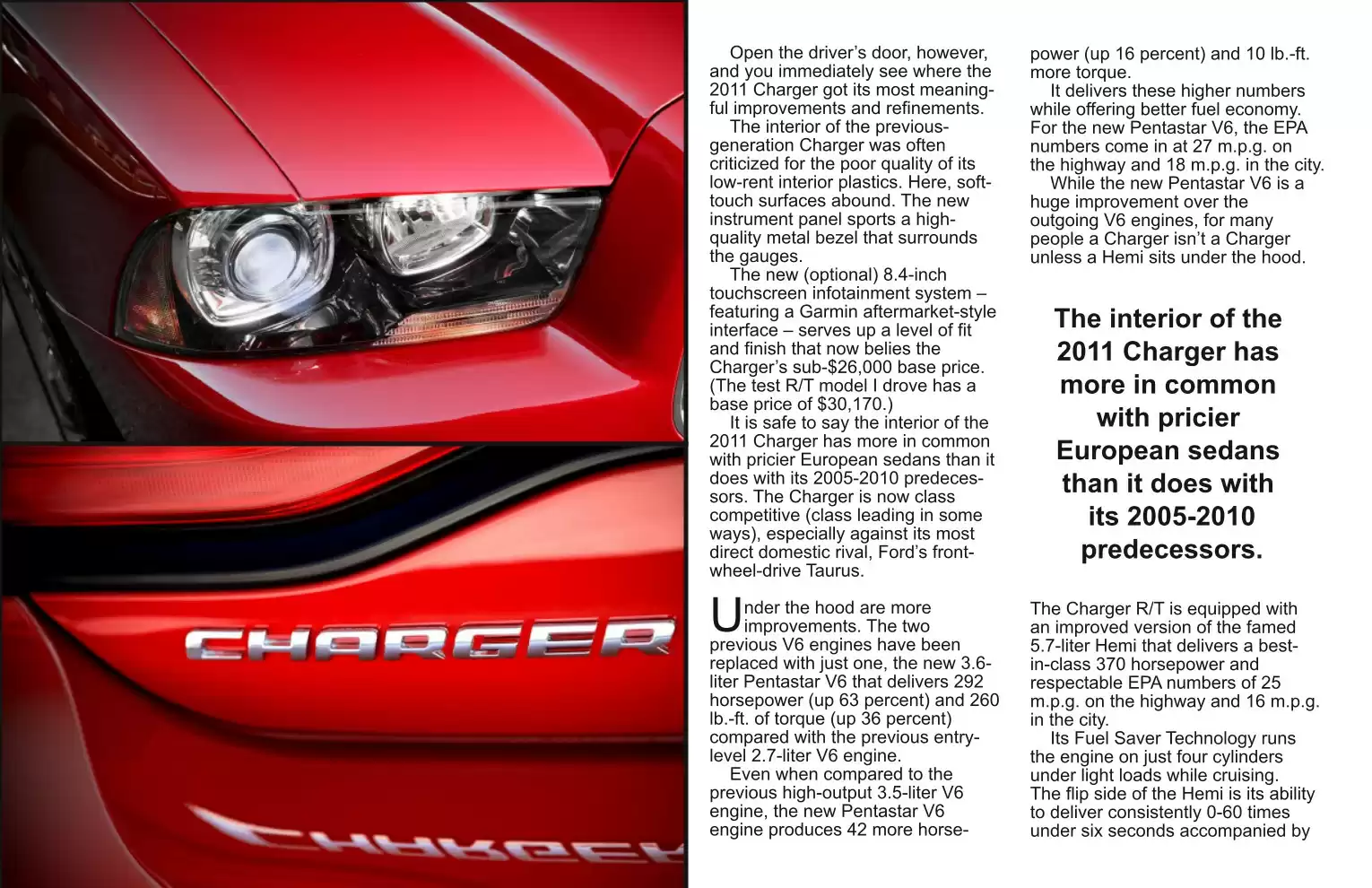
Open the driver's door, however, and you immediately see where the 2011 Charger got its most meaningful improvements and refinements.
The interior of the previous-generation Charger was often criticized for the poor quality of its low-rent interior plastics. Here, soft-touch surfaces abound. The new instrument panel sports a high-quality metal bezel that surrounds the gauges.
The new (optional) 8.4-inch touchscreen infotainment system--featuring a Garmin aftermarket-style interface--serves up a level of fit and finish that now belies the Charger's sub-$26,000 base price. (The test R/T model I drove has a base price of $30,170.)
It is safe to say the interior of the 2011 Charger has more in common with pricier European sedans than it does with its 2005-2010 predecessors. The Charger is now class competitive (class leading in some ways), especially against its most direct domestic rival, Ford's front-wheel-drive Taurus.
Under the hood are more improvements. The two previous V6 engines have been replaced with just one, the new 3.6-liter Pentastar V6 that delivers 292 horsepower (up 63 percent) and 260 lb.-ft. of torque (up 36 percent) compared with the previous entry-level 2.7-liter V6 engine.
Even when compared to the previous high-output 3.5-liter V6 engine, the new Pentastar V6 engine produces 42 more horse-power (up 16 percent) and 10 lb.-ft. more torque.
It delivers these higher numbers while offering better fuel economy. For the new Pentastar V6, the EPA numbers come in at 27 m.p.g. on the highway and 18 m.p.g. in the city.
While the new Pentastar V6 is a huge improvement over the outgoing V6 engines, for many people a Charger isn't a Charger unless a Hemi sits under the hood. The Charger R/T is equipped with an improved version of the famed 5.7-liter Hemi that delivers a best-in-class 370 horsepower and respectable EPA numbers of 25 m.p.g. on the highway and 16 m.p.g. in the city.
Its Fuel Saver Technology runs the engine on just four cylinders under light loads while cruising. The flip side of the Hemi is its ability to deliver consistently 0-60 times under six seconds accompanied by
| Previous Page | Next Page |